

| Last year ( 2018 ) at the end of August to the end of September , I made
a flower watching trip in the Cape states of South Africa in search of
flowers in early spring. There are six plants district systems in the world. Cape Floral Kingdom system among them which is centered on the African southern tip of Cape Town is the very narrow area of about 300,000 km2, (equivalent to the territory of , 0.2% of the whole world land area ). In this narrow range there are 9,000 kinds of plants ( 6300 kinds of endemic species) grow. What's more, this is an arid area with a Mediterranean climate, where the plants grow only in the rain of winter. Therefore, there are a lot of flowers and flowers ... a flood of flowers in places where plants can grow. About one month from the end of August until late September, I have been chasing the flowers from Namaqualand, the northern part of South Africa, to Cape Town, a south tip of Africa where snow still remained in the mountains of 2000m high. I made a self-catering camp tour in the first half of the trip, then joined a group tour with a flower expert, and finally enjoyed a solo trip around Cape Town's Botanical Gardens and Table Mountain. I have seen a lot of flowers, but this time I will introduce irises of South Africa. |
| Trip course (1) Springbok = Goegap Nature Reserve = Namaqualand = Nieuwoodbille (August 24 to September 3) (2) West Coast National Park = Lelie Fontaine = Calvinia = Tulbagh = Cape Town = Worcester (September 4 to 19) (3) Cape Town city (Kirstenbosch Botanical Gardens, Table Mountain) (September 20 to 29) |
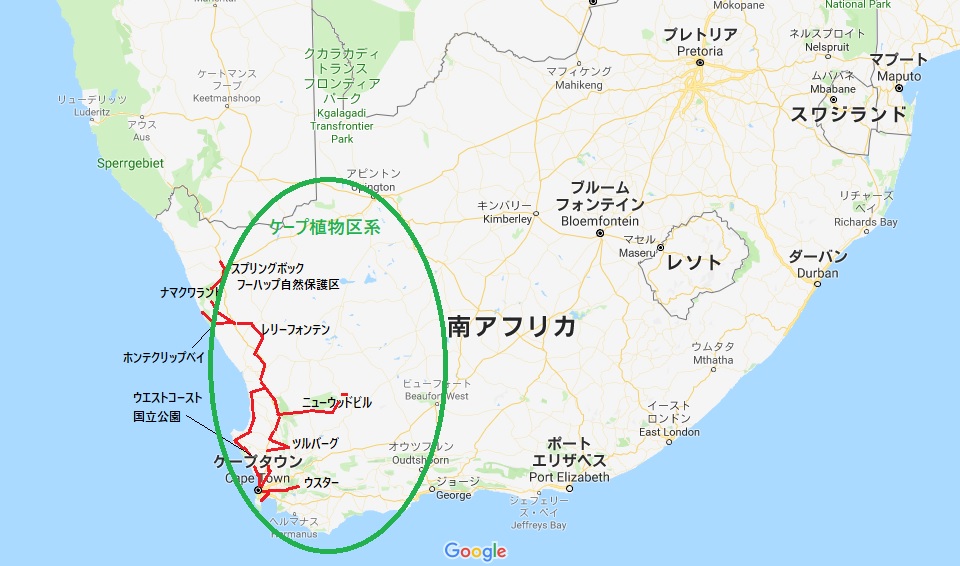 (South Africa South) (from the Google map) (1) Namaqualand flowers Namaqualand, which follows the Namibia Desert in the north, is a desert area, but when the heavy rains falls in winter, the earth is filled with the flowers of the Asteraceae family. In such a flood of flowers, a group of iris with bulbs glows like a twinkling star in a galaxy. |
.jpg) |
Gladiolus salteri Even in Japan, there is gladiolus, but they are not all horticultural species and no wild ones. As Japanese name shows as Dutch iris (Oranda Shobu), it was brought in from South Africa during the Meiji era and became widely cultivated. Many of wild gladiolus species are low in length. And this species is around 10 cm high. This is a rare species in South Africa and is slightly found in the east of Springbok in northwest of Namaqualand . The name of Gladiolus is taken from the Latin word Gladius because its leaf shape resembled that of a sword . (Goegap Nature Reserve, alt. 950m) |
|||||||||||
| The iris family flowers are said to have about 66 genera and 2000 species
in the world, but in South Africa there are a half of them, 1050 species,
and 97% of which are endemic species. In addition to Gladiolus, Ixia, Montebretia,
Babiana, etc. have already been introduced into Japan, but there are still
more members of the iris family of about 30 genera such as Moraea, Geissorhiza,
Lapeirousia, Spalrachis, and etc. (There are only 3 genera and 7 wild species in Japan: Iris, Iris setosa and Scutellaria ) |
||||||||||||
|
||||||||||||
.jpg) |
.jpg) |
|
| Babiana framesii (Namaqualand, Skill Pad, alt. 470m) |
Babiana dregei (Namaqualand ・ Lelie Fountain alt. 1200m ) |
|
You may imagine that Namaqualand is one of the four largest wild flower gardens in the world, where flowers are in full bloom, but it is actually a desolate arid area. There are no grass lands other than private ranches surrounded with electric fences for grazing sheep and goats. Along the fences flowers are blooms sporadically.in concentration. |
||
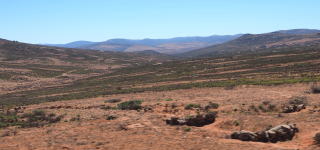 |
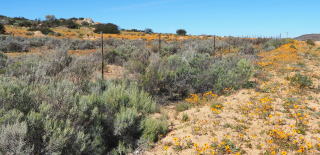 |
|
And there are large groups of Asteraceae flowers such as Gazania in places.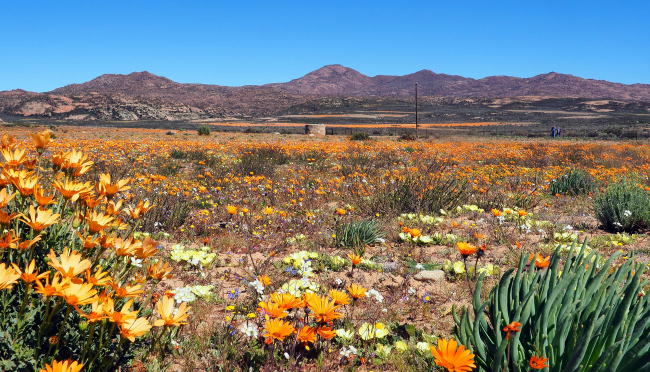 (Leliefontein/Kamiesberg) (Leliefontein/Kamiesberg)In fact, the flowers are planted for the pasture to sheep (because there is no poison on the flowers of the family Asteraceae).  |
||
.jpg) |
Lapeirousia fabricii (East of Hondeklipbaai, alt. 150m) |
|
Moraea fugax Although this Moraea looks like Japanese irises, the habitat is greatly different. It grows in a sand dune on the coast (Japanese one in wetland). The leaves are thin and long to reduce evaporation from the leaves and resist drying. This flower only blooms for a short time in the afternoon. So, it is named as fugax (the meaning of ephemeral in Latin). (Hondeklipbaai, alt. 3m) |
.jpg) |
|
We left Namaqualand, went south on Route 7 and headed for Nieuwoodbille.
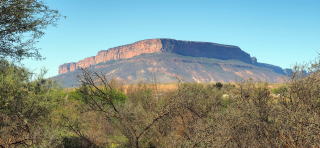 |
Speaking of Table Mountain, the mountain behind Cape Town is famous. But
actually, table-like mountains (plateaus) can be seen everywhere. As the
altitude is near 1000m, even in the dry desert area there are clouds on
the plateau and rains a lot and it has a wet and humid climate. There are
many flowers, and also agriculture and farming are run. (Near Vanrhynsdorp) |
|
| Moraea serpentina The foot of Table Mountain is a dry ground. Even in harsh environments, the leaves wind like a coil and prevent evaporation. Plants respond flexibly. Serpentina means snake (from the shape of a coiled leaf) (alt.170m) |
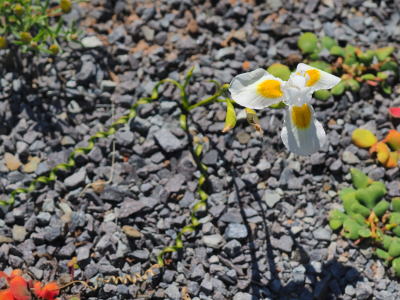 |
1.jpg) Moraea bifida (Moraea bifida) Moraea bifida (Moraea bifida) |
Various iris species are blooming here. |
||||
2.jpg) |
Hesperantha vaginata The color with yellow and black (dark engine color) is a kind of warning signal. It also seems to be effective in catching the attention of insects. It is named from the shape of lower leaves - sheath (Vagina in Latin). |
||||
|
|
||||
1.jpg) Ferraria variabilis |
|
||||
1.jpg) Lapeirousia oreogena Lapeirousia oreogena |
|||||
|
|
||||
|
1.jpg) |
||||
1.jpg) 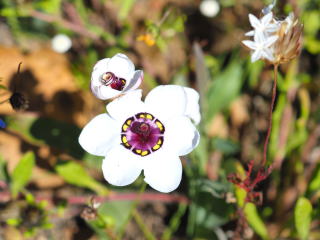 Sparaxis elegans As the name suggests, it is very elegant. The central ring is distinctive and looks like a necklace. The reference species is light orange. |
|||||
|
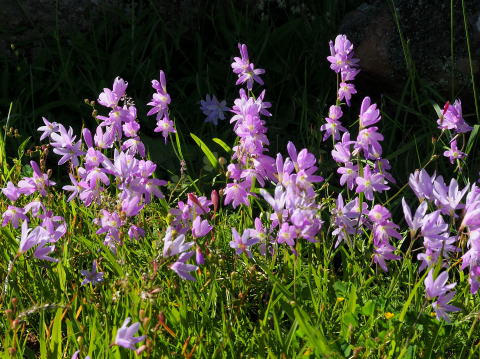 |
||
| Southern Hemisphere Starry Sky | |||
 |
|||
| As the air is dry, the night sky is full of stars. The Milky Way flows from the upper right to the lower center, and beside it the Southern Cross star twinkles. You can see the Large and Small Magellan nebula on the left. (In the distant future, the Milky Way Galaxy will merge with the Andromeda Nebula. I wonder at the time the Earth lives are still living. |
 |
||
| We head to Tulbagh, which is famous for wine. On the way, we drop to Cederberg
Mountain where 600 million years old strata have become exposed. At Tulbagh we stayed at a winery and enjoyed delicious wines and flowers. |
|||||||||||||||||||||||||||||||
Gladiolus venusta
|
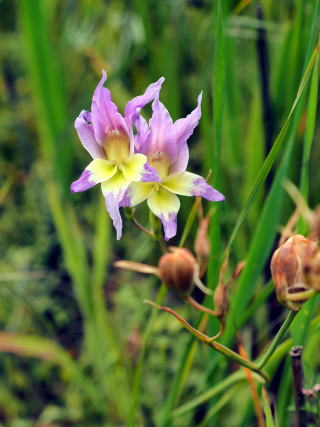 |
||||||||||||||||||||||||||||||
|
|||||||||||||||||||||||||||||||
About 20 km south of Tulbagh, there is the Elands Nature Reserve, which designates a large private area as a nature reserve. This is a special place where only limited guests are invited. In addition to Peacock Moraea, which is one of the most beautiful flowers among Iris family, there are many endemic species such as iris which took Japanese name.
|
|||||||||||||||||||||||||||||||
So far, we have been coming south all the way along the National Road No. 7, here turned to the west, went to the coast (West Coast). It is basically a dry area, but the mist from the sea rises. Plants take in a little water firmly and grow rapidly.
2.jpg) |
Babiana lingens A flower that uses a small bird (Sunbird) as a pollinator. A bird stops in a stalk-like branch (deformed leaf) that curves backward and sucks nectar. At that time, pollen is delivered to the birds and carried. This species is a large type. 1.jpg) Sunbird (about 15 cm in length ) ) |
||||||
|
.jpg) |
||||||
1.jpg) |
Babiana_rubrocyanea Endemic of Darling region, a center of the West Coast. Every September , a festival of wild plants is held in Darling, and flower lovers gather from all over the country. |
||||||
| South African version of "Look-a-like sister" | 1.jpg) |
1.jpg) |
|||||
| Romulea obscura | Romulea eximia | ||||||
In the coastal sand dunes, flowers of the Asteraceae family such as Gazania are predominant. |
|||||||
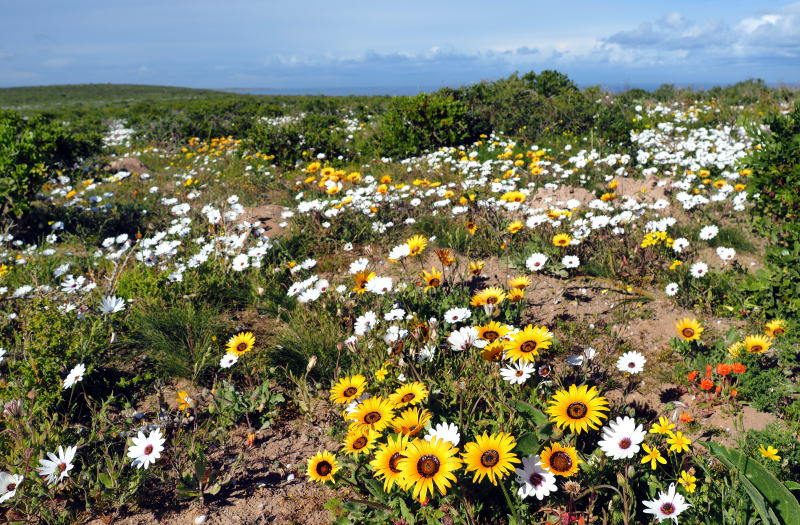 |
| Finally we are in Cape Town, the capital city of Western Cape. The highway runs across as if in the American West Coast.
|
In Cape Town, based on a hotel in the city, we searched for flowers in the Cape Peninsula and the eastern suburbs, and after the group left, I moved to a guest house and searched for flowers in the Kirstenbosch Botanical Garden and Table Mountain.
1.jpg) |
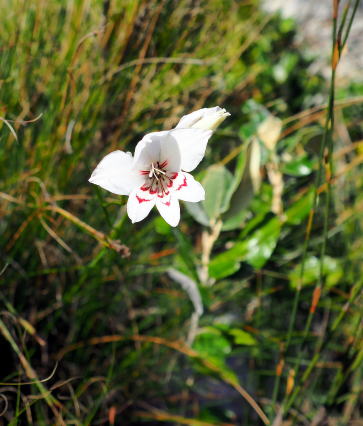 |
Growing in the sandy land overlooking the sea of Cape Peninsula. carinatus means Keel in Latin. The central part of the leaf is raised like a keel of a vessel. On the other hand, Debilis is attached to small and cute seeds such as Hemanitage (Anemone debilis) in the sense that it is weak and weak. |
||||
| Gladiolus carinatus | Gladiolus debilis | |||||
|
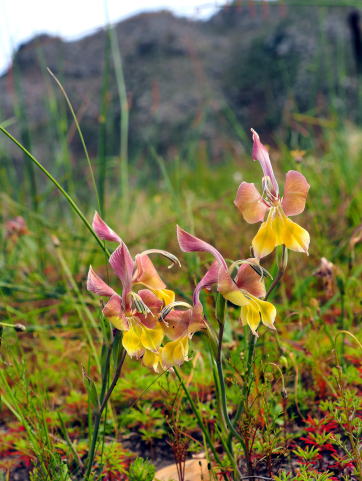 |
|||||
| The Irises shown here are about half of what I have seen on this
trip. In addition to this, there are thousands and hundreds of species
of Asteraceae, Hamizonaceae, etc., and other flowers bloom depending on
the season. I am overwhelmed by the variety and abundance. For example, Brunsvigia, amaryllis family is blooming like 1000 candle sticks flaring in the dry field in autumn (around March). I would like to revisit by all means in March next year. |
★ Thank you for your cooperation in charity for disaster victims (Eastern
Japan Earthquake, Hokkaido Iburi Earthquake, West Japan Heavy Rain)
In December last year, I showed a flower calendar from the flower pictures I took and asked for cooperation. Finally 204 copies were
purchased by 111 people, and the total amount (204,000 yen) was donated
to the public interest foundation "Michinoku Mirai Foundation"
which donates scholarship to orphans by the Great East Japan Earthquake.
In addition, 150 copies of the flower calendar were sent to temporary housing
for those affected by the Hokkaido Iburi Earthquake and the heavy rainfall
in West Japan. Some persons who helped with the charity of the Great East
Japan Earthquake donated the purchased calendar to the temporary housing.
Thank you as well.
We will continue our charity activities even after "Reiwa" era,
so please continue your cooperation in the future.
★Notice of Noh performance "Tooru"
This autumn our Noh play club will hold performance at the National Noh Theater. Along with that, I plan to play Noh "Tooru", who was a top aristocrat in "Heian" era and the model of main character of Genji Story, Hikaru Genji. This play is well-performed at the Noh professional's funeral service because it represents a song of condolence or sympathy.
I play for the admonition to my father who died last year, my mother's
7th memorial, my feelings for my diseased friends, as well as for celebration
of my turning 70 years old.
Date: September 22 (Sun)
Place: National Noh Theater (Sendagaya)
Details will be announced later.
To the page of flowers in the four seasons(sorry in Japanese)
Go to Insight Research Website
2019.6.12 upload